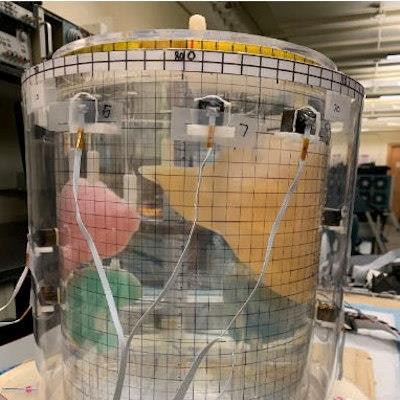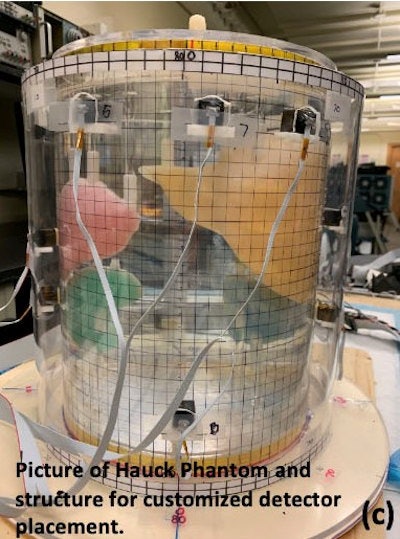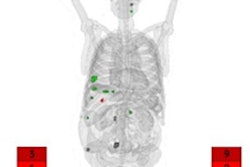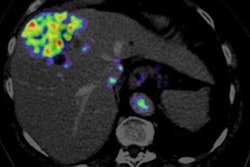
Researchers are developing a radiation tracking vest for patients to wear at home to monitor radiation dose to organs during radionuclide therapy, according to a study presented at the 2021 annual meeting of the Society of Nuclear Medicine and Molecular Imaging (SNMMI).
 Radiation tracking vest. Image courtesy of Robert Miyaoka.
Radiation tracking vest. Image courtesy of Robert Miyaoka.The remote monitoring vest was developed to allow for personalized tracking of radiotracer washout from organs without requiring patients to make multiple return visits to a medical center for nuclear medicine imaging exams. The vest could be used by patients undergoing therapy with lutetium-177 (Lu-177) DOTATATE (Lutathera), for example, according to the researchers.
At SNMMI 2021, lead study author Robert Miyaoka, PhD, of the University of Washington presented research testing the vest's ability to measure radionuclide washout based on 3D-printed anthropomorphic phantoms designed to simulate organs like the liver, spleen, and kidneys.
Lutathera was approved in 2018 by the U.S. Food and Drug Administration for the treatment of neuroendocrine tumors (NET). Package instructions for the drug recommend four doses of 200 mCi each for all NET patients.
However, this universal prescription may be too much for some patients, leading to radiation damage in kidneys or other organs. For others, four doses may be significantly less than can be safely tolerated, leading to suboptimal treatment and shortened progression-free and overall survival, according to the researchers.
Moreover, tailoring the number of doses to each patient requires repeated nuclear medicine scans (e.g., multiple SPECT or SPECT plus planar) over the course of several days to perform organ-at-risk dosimetry, Miyaoka added.
In the study Miyaoka presented at SNMMI 2021, the team of researchers tested a personalized remote radiation tracking device that they built in the form of a vest that can be worn by patients. The group wanted to determine whether the vest could estimate washout kinetics for the kidneys, the main organ at risk from radiation exposure during radionuclide therapy, to within 5% of the true decay rate of Lu-177 DOTATATE.
The researchers built a circular cylinder phantom (25 cm in diameter by 30 cm tall) with anthropomorphic 3D objects inside representing the liver, spleen, and kidneys. The phantom organs had fill ports that allowed them to add radionuclide without having to disassemble the phantom. Flux detection was achieved with detector modules about the size of dimes placed around the organs on the cylinder.
Using data from measurements on days 7, 14, and 21, the researchers found the estimate of the half-life of the washout from each of the organs and background was always within 4% of the true decay rate, with a maximum error of 3.8% at 21 days for the left kidney.
"Our [vest] methodology was experimentally validated, and we were able to estimate washout from all organs of interest," Miyaoka said.
These results were similar to previous results based solely on simulations, he added. The researchers are currently developing a vest that can be used on patients and have already developed the hardware and registration tools to enable accurate dawning of the vest for each wearing.
"We anticipate recruiting our first patients in the late fall of this year," he concluded.





















